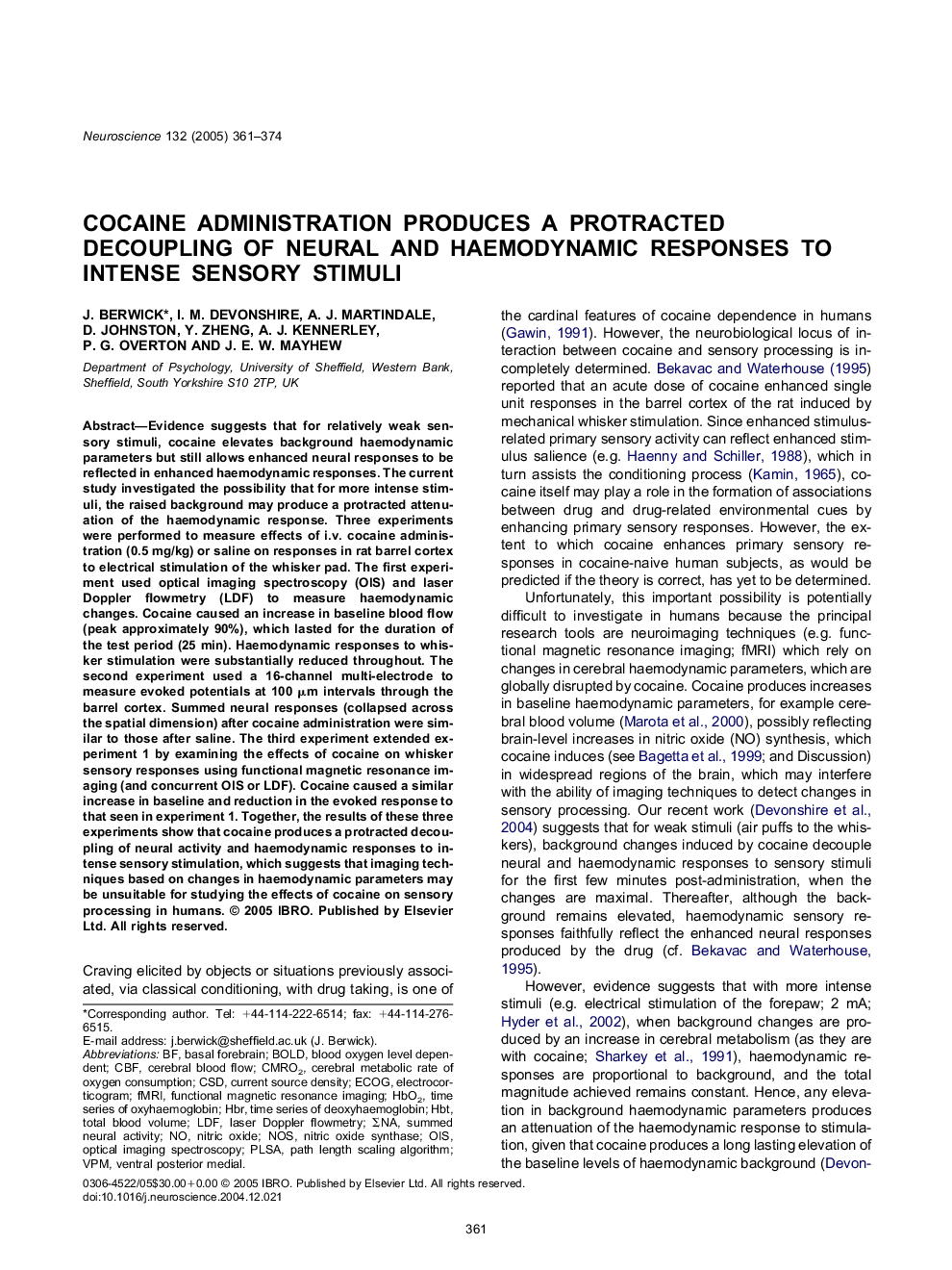| Article ID | Journal | Published Year | Pages | File Type |
|---|---|---|---|---|
| 9425645 | Neuroscience | 2005 | 14 Pages |
Abstract
Evidence suggests that for relatively weak sensory stimuli, cocaine elevates background haemodynamic parameters but still allows enhanced neural responses to be reflected in enhanced haemodynamic responses. The current study investigated the possibility that for more intense stimuli, the raised background may produce a protracted attenuation of the haemodynamic response. Three experiments were performed to measure effects of i.v. cocaine administration (0.5 mg/kg) or saline on responses in rat barrel cortex to electrical stimulation of the whisker pad. The first experiment used optical imaging spectroscopy (OIS) and laser Doppler flowmetry (LDF) to measure haemodynamic changes. Cocaine caused an increase in baseline blood flow (peak approximately 90%), which lasted for the duration of the test period (25 min). Haemodynamic responses to whisker stimulation were substantially reduced throughout. The second experiment used a 16-channel multi-electrode to measure evoked potentials at 100 μm intervals through the barrel cortex. Summed neural responses (collapsed across the spatial dimension) after cocaine administration were similar to those after saline. The third experiment extended experiment 1 by examining the effects of cocaine on whisker sensory responses using functional magnetic resonance imaging (and concurrent OIS or LDF). Cocaine caused a similar increase in baseline and reduction in the evoked response to that seen in experiment 1. Together, the results of these three experiments show that cocaine produces a protracted decoupling of neural activity and haemodynamic responses to intense sensory stimulation, which suggests that imaging techniques based on changes in haemodynamic parameters may be unsuitable for studying the effects of cocaine on sensory processing in humans.
Keywords
PLSAHbO2LDFVPMCSDHbRECoGCMRO2CBFBOLDOISNOSelectrocorticogramcurrent source densityfunctional magnetic resonance imagingfMRIcerebral blood flowtotal blood volumeHBTblood oxygen level dependentlaser Doppler flowmetrycerebral metabolic rate of oxygen consumptionNitric oxidenitric oxide synthasebasal forebrain
Related Topics
Life Sciences
Neuroscience
Neuroscience (General)
Authors
J. Berwick, I.M. Devonshire, A.J. Martindale, D. Johnston, Y. Zheng, A.J. Kennerley, P.G. Overton, J.E.W. Mayhew,
